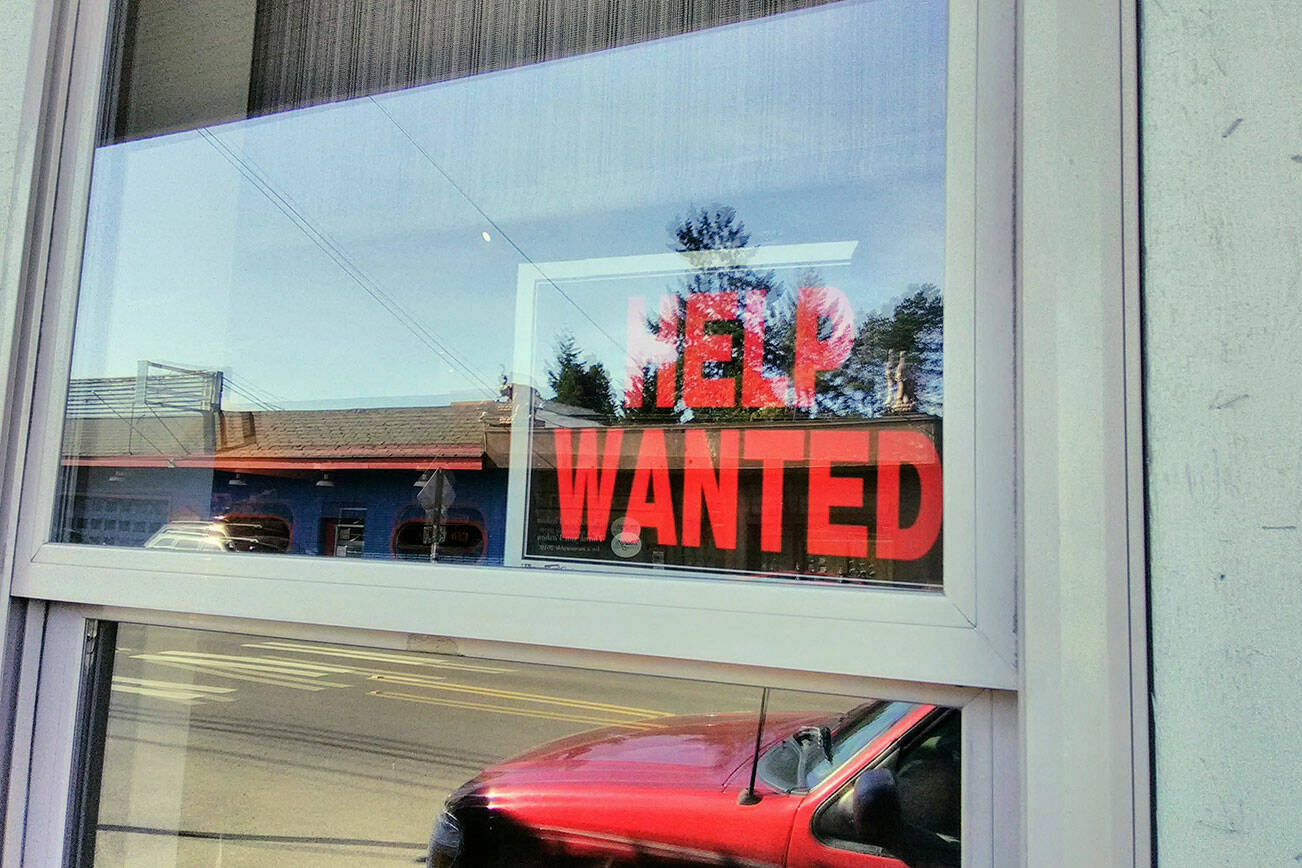When I was growing up on the East Coast, you rarely ever saw a “Help Wanted” sign outside any of the local businesses.
Jobs were hard to come by at the time, and I don’t mean well-paying jobs either; even minimum-wage jobs were scarce.
I remember watching the local news one night when the reporter took his television audience into a mall where a huge lineup had formed outside of a wicker store that was looking to hire a full-time employee at minimum wage.
The people in the line were not kids looking for their first job to make some money to pay for video games or makeup, but were mostly made up of desperate looking adults in a depressed economy who were distressed that there was so much competition even for a job with such low pay and no benefits.
The reporter talked to out-of-work teachers and nurses in the line, even people with business degrees and other advanced learning behind them, and they all said they had been trying to find work in their fields for months, even years, and were now forced to fight it out with the dozens of other people in the line for a job that would barely cover a fraction of their mortgage or rent, much less the rest of their bills.
That’s when I first realized that, like so many other young people in that part of the country, I would likely have to leave my homeland for greener pastures elsewhere.
I moved to B.C. shortly after that where jobs were a little easier to come by and managed to land myself a labour job within days of arriving here that paid teamster wages, which was well over twice what I was ever paid before.
But even here at the time, you had to hustle to get the work, but coming from a job-starved climate, I knew how to do that in spades.
Flash forward to today and the job situation on the Island is what I could only have dreamed when I was younger.
There are “Help Wanted” signs everywhere, and many of them are not for minimum wage jobs.
The concrete plant where I was making teamster wages has had a large “Help Wanted” sign outside its doors for months and the fact that the sign is still there means that the company is, unbelievably to me, having a hard time filling its worker ranks.
Many similar businesses in the Cowichan Valley have also been looking for workers for months to fill good paying positions.
Apparently, there are worker shortages in many locations aross the country right now, and many are blaming it partly on federal COVID-19 income supports like the Canada Recovery Benefit.
As economic activity ramped up through the summer as health prohibitions began to relax, Ottawa has been scaling back the level of benefits provided, but the CRB still pays $300 a week before taxes, which is twice as much as the $150 someone would earn working 10 hours a week at $15 an hour, so many are reluctant to return to work for a lesser wage than just sitting at home.
In many cases, particularly in the restaurant industry where many eateries were forced to shut down for months on end due to COVID-19, a lot of workers moved on to other careers that they consider more stable than restaurants have been for the past 18 months.
They are reluctant to return and a number of restaurants in the Valley have had to close their doors not because their business hasn’t returned, but because they just can’t find enough staff to serve the customers.
Competition to attract new staff is fierce, qualified candidates are routinely receiving multiple offers, and workers are driving a harder bargain.
It’s a bizarre situation, one that I couldn’t imagine years ago, but here we are.
robert.barron@cowichanvalleycitizen.comLike us on Facebook and follow us on Twitter

